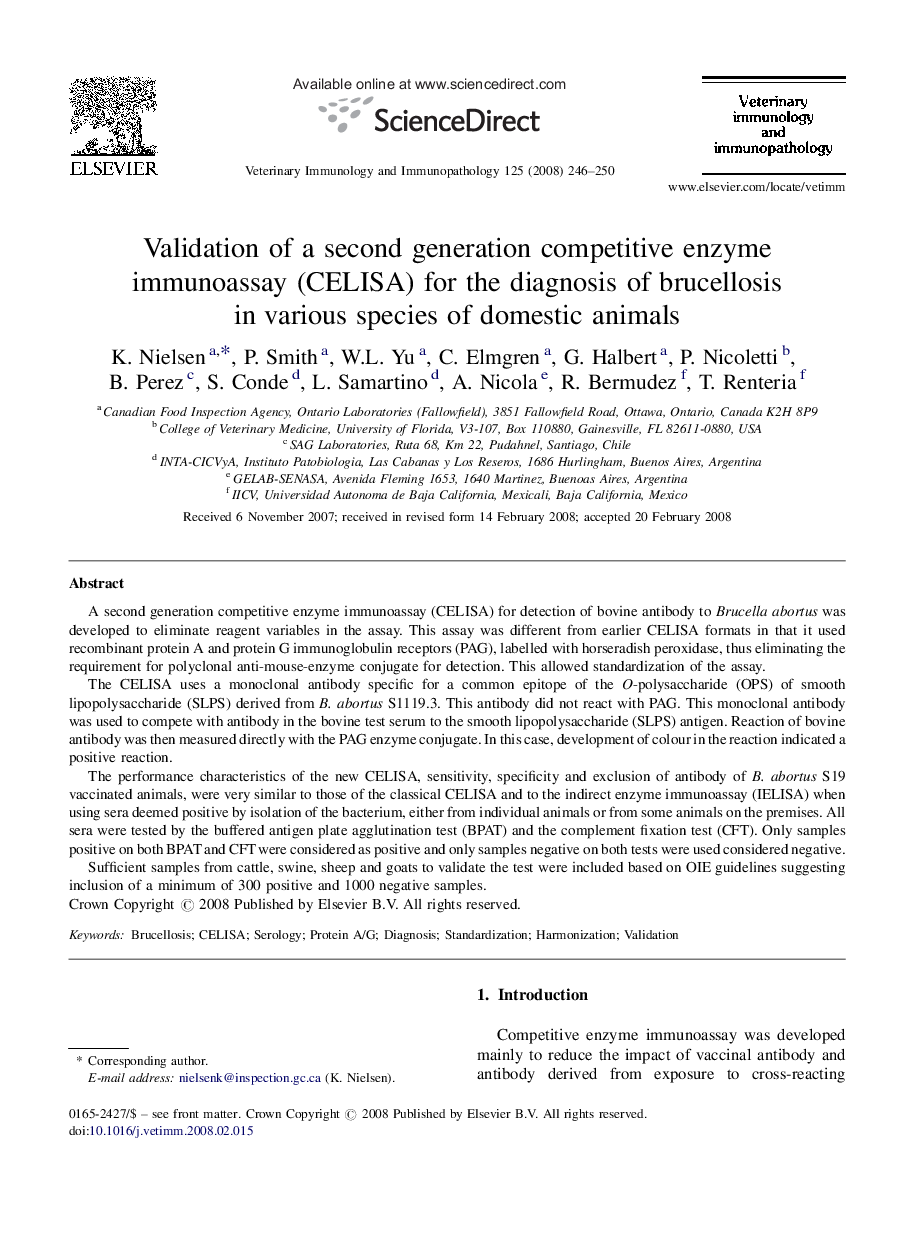| کد مقاله | کد نشریه | سال انتشار | مقاله انگلیسی | نسخه تمام متن |
|---|---|---|---|---|
| 2462987 | 1555095 | 2008 | 5 صفحه PDF | دانلود رایگان |

A second generation competitive enzyme immunoassay (CELISA) for detection of bovine antibody to Brucella abortus was developed to eliminate reagent variables in the assay. This assay was different from earlier CELISA formats in that it used recombinant protein A and protein G immunoglobulin receptors (PAG), labelled with horseradish peroxidase, thus eliminating the requirement for polyclonal anti-mouse-enzyme conjugate for detection. This allowed standardization of the assay.The CELISA uses a monoclonal antibody specific for a common epitope of the O-polysaccharide (OPS) of smooth lipopolysaccharide (SLPS) derived from B. abortus S1119.3. This antibody did not react with PAG. This monoclonal antibody was used to compete with antibody in the bovine test serum to the smooth lipopolysaccharide (SLPS) antigen. Reaction of bovine antibody was then measured directly with the PAG enzyme conjugate. In this case, development of colour in the reaction indicated a positive reaction.The performance characteristics of the new CELISA, sensitivity, specificity and exclusion of antibody of B. abortus S19 vaccinated animals, were very similar to those of the classical CELISA and to the indirect enzyme immunoassay (IELISA) when using sera deemed positive by isolation of the bacterium, either from individual animals or from some animals on the premises. All sera were tested by the buffered antigen plate agglutination test (BPAT) and the complement fixation test (CFT). Only samples positive on both BPAT and CFT were considered as positive and only samples negative on both tests were used considered negative.Sufficient samples from cattle, swine, sheep and goats to validate the test were included based on OIE guidelines suggesting inclusion of a minimum of 300 positive and 1000 negative samples.
Journal: Veterinary Immunology and Immunopathology - Volume 125, Issues 3–4, 15 October 2008, Pages 246–250